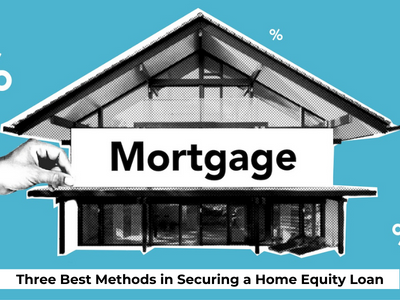Home equity is the amount of cash you can derive either from your home’s mortgage or from its resale value. For simplicity, it is the value of your home minus the balance on your current mortgage (if you are still paying for the latter).
For example, if your home is valued at $400,000 with $150,000 left on your mortgage then the difference between the two amounts ($400,000-$150,000=$250,000) is the value of the remaining equity on your home.
Tapping your home equity as an alternative source of funds can help in managing your expenses like house renovation, school tuition payment, debt consolidation, and other activities that require complementary financing.
We will look at three of the most common home equity methods currently used by banks and mortgage agencies and explain them as concisely as possible. This will place you in a position to better understand your mortgage agreement and help you reach a sound decision.
Three Ways to Acquire Home Equity
There are three available options to secure your home equity with each method having its distinct criteria to satisfy before you can use them. Simply choose which of these choices best suits your financial requirements.
Nothing beats an intelligent homeowner who is intent on familiarizing themselves with things to know about a mortgage deal and getting the most of it.
Method 1: Cash-out Refinancing
Cash-out refinance means refinancing your current mortgage with a new one that is higher in value than your previous one.
Refinancing your mortgage includes a break-off contract fee or prepayment penalty on your current mortgage. It is sensible, however, to pay for a break-off cost at a lower monthly interest rate because this can save you thousands of dollars in the long run.
Example of Cash-out Refinancing:
Assuming you took a $400,000 mortgage to buy a property worth $500,000 and after years of regular payment, you still have $100,000 as your outstanding balance.
You are planning to renovate your home kitchen and purchase new appliances to go with its modernized appearance. You want to know how much your bank is willing to lend you money for this project.
The bank will lend you approximately 75% of your home’s current value (this amount differs from bank to bank depending on the stipulated mortgage agreement).
Here is the explanation:
For a $500,000 home value, this would be around $375,000 (75% of $500,000). You need $100,000 to settle the outstanding balance of your original mortgage. The difference between the former and the latter values amounting to $275,000 in cash is your take-home loan.
However, if you like to cash out $100,000 instead then you are much better off to refinance your $200,000 mortgage and receive a lower monthly interest rate and more lenient terms.
After this is agreed upon by the mortgagee (bank or lending institution) and the mortgagor (you) then your new monthly installment payment schedule will commence.
- Home Equity Line of Credit or HELOC
A HELOC is a line of credit secured by the equity on your home. They are good sources of funds or revolving credit that you can withdraw from any time you need money. This must coincide, however, with its “draw period” as long as your line of credit remains open and can be used immediately.
Choosing HELOC, however, is best suited for long-term funding since its interest rate is higher than your mortgage rate.
You still run the risk of losing out on this deal if your current financial standing cannot cope with your scheduled loan payments. Make certain that your finances, most especially your credit score, are in check.
Example of HELOC:
You have $100,000 in HELOC that you can borrow. If you only used $30,000 then you only need to pay the interest on the amount you used and not on the $100,000 value.
- Second Mortgage
A home equity loan is often referred to as a second mortgage loan that acts as a buffer to your primary mortgage.
For this type of mortgage, you borrow a specific amount of money, receive it in a lump sum, and pay it with a flat monthly installment for the duration of the term.
This method carries a fixed interest rate because you have two mortgage payments to make each month (one for your primary mortgage and another for your second mortgage). Moreover, you also have to pay accompanying closing costs and fees on your second mortgage loan.
Example of Home Equity Loan:
Assuming the original value of your home is pegged at $500,000. You can acquire 85% equity value on your home minus the outstanding balance on your first mortgage (i.e. $200,000). You are allowed to borrow $225,000 using your second mortgage.
Choose what is Best
Home equity is arguably the most valuable asset for any homeowner to acquire. Understanding how your mortgage works, you can decide confidently on the type of mortgage loan to choose that will benefit you the most.
The three methods used in applying for home equity carry potential bottlenecks since your primary mortgage is used as the basis for an extended home loan. You have to be diligent and mindful not to default on your scheduled payments to avoid penalties and other compromises.
We are your Oshawa specialists in mortgaging and in credit score restructuring for 9 years running.
Our offices are spread across Canada and we offer financial advisory services as well as mortgage assistance.
Feel free to contact us at (416) 825 0142 or drop an email to faizal.garasia@dominionlending.ca.
We are more than glad to help in choosing the best suitable home equity plan for you.




